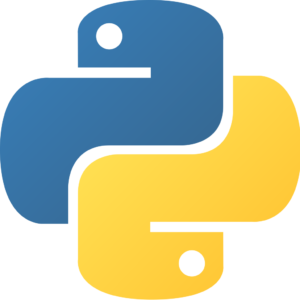Python Hacks for absolute Beginners

The world is slowly getting converted into a “programmable” world. Coding is becoming an essential part of every individual’s life.
But coding is not everyone’s cup of tea. Most of the people find it difficult to understand the programming language. But Python is removing the fear about coding from the minds of the people.
A variety of factors which make Python the best programming language compared to others are:
- It’s simple to understand.
- It’s incredibly versatile.
- It contains a broad collection of modules and libraries.
-
Some simple Python hacks for beginners are as follows:
1. String Reverse:
Reversing a string can be a lengthy code in other programming languages but here in Python, it’s quite simple. Thanks to the slicing operator in Python.
a=”hello.”
print(“Reverse is”, a[::-1])
Output: Reverse is olleh.
2. Combining to list (List Zipping):
This is a very efficient and quick option to merge to list. Just write zip(list1, list2) and that combines the two lists.
a=[‘hello’,’how’,’what’,’do’] b=[‘there’,’are you’,’is’,’the best’] for x, y in zip(a, b): print(a,b)
Output:
hello there
how are you
what is
do the best
3. Negative Indexing or Reverse Indexing:
Reverse Indexing helps us when we don’t know the exact length of the list and we need to extract the last element(s).
a = [0, 1, 2, 3, 4, 5, 6, 7, 8, 9, 10]
a[-3:-1]
Output:
[8, 9]
4. Swapping Numbers:
Swapping numbers in other programming languages require a temporary variable and a loop. But in Python, it can be performed in just one line.
a,b = 5, 7
a,b = b,a
print(a,b)
Output:
7,5
5. Splitting String:
A string can be split in multiples with the help of split() function. The splitting depends on the user. The user can pass in the parameter where he wants to split the string.
By default, a string is split at spaces. The output of string is returned as a list
str1="Python is fun"
str2=str1.split()
print(str2)
Output: [‘Python ’, ‘is’, ‘fun’]
6. Enumeration:
Enumeration helps a user to find the index really quick when the user is within a loop. In the output first value denotes the index and the second value denotes the number.
sample_list=[1,2,3] for idx,item in enumerate(sample_list)
Output:
0:1
1:2
2:3
7. Most frequent element in a list:
Checking the most frequent element in a list can be a bit time-consuming in other programming languages but in Py makes it simple and it can be executed in just one line of code.
lst= [1, 2, 3, 4, 2, 2, 3, 1, 4, 4, 4]
print(max(set(lst), key = lst.count))
Output:
4
8. Matrix Transpose:
Matrix transpose requires loops for finding the transpose of a matrix in Python is simple. Zip function is used to interchange the position of rows and columns for getting the transpose.
matrix1 = [[1, 2, 3], [4, 5, 6]]
matrix2=zip(*matrix1)
for row in matrix2:
print(row)
Output:
(1, 4)
(2, 5)
(3, 6)
9. Printing Multiples of a String:
Multiples of a string can be printed by just multiplying it with the number of times it must be repeated.
print(“ha”*3+’ ‘+”ok”*5)
Output: hahaha okokokokok
10. Concatenating the elements of a List:
To join different items of a list the join() function is used. It combines all the items and returns a string as the output.
a = [“Python ”, “is”, “fun!”]
print(“ “.join(a))
Output: Python is fun!
Python makes the coding way too simple compared to other programming languages. 100 lines task can be performed much efficiently with half the lines required in other languages.
It is the top-level language for Machine Learning and AI due to its variety of features.
A beginner must focus on learning the language with all its features and try to implement them as much as possible.
Check out the schedule for IPL: IPL 2020